How many pictures do you have of your cat in a cute napping position? Sleeping cats with paws covering their eyes or dangling over the windowsill beg for photos, don’t you think? And with the amount of time they sleep — experts say an average of 15 hours a day — that’s a lot of napping!
As you watch your cat twitching while snoozing, you might wonder, do cats dream as we do?
Cats do indeed dream during their sleep. Like humans, cats have what’s called REM (rapid eye movement) sleep, which is when we humans tend to have the most vivid dreams. During REM sleep, your kittie’s brain is active and in dreamland.
Since we don’t have cat translators, we don’t really know what cats dream about, but they likely draw from their experiences as we do. For example, they’ll probably dream of stalking a vole or playing with a favorite toy, and they may even have bad dreams occasionally.
If you’ve ever wondered what goes on inside your cat’s head when they’re asleep, you’re in luck!
Let’s look at our feline friends’ sleep cycles.
What’s a Cat’s Sleep Cycle?
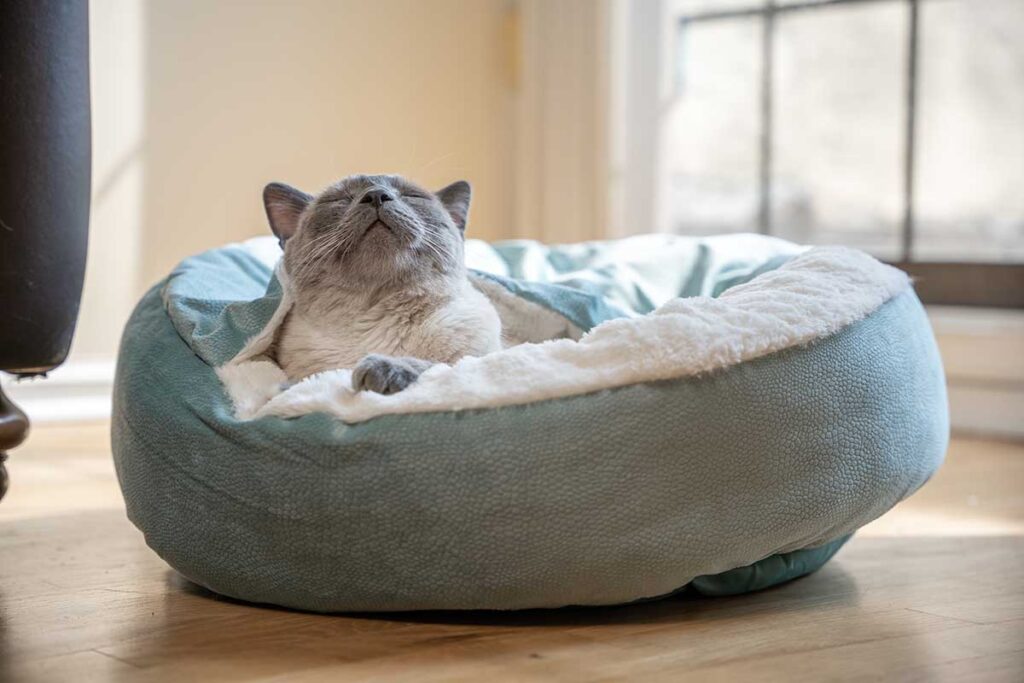
The circadian rhythm guides your cat’s sleep cycle. For people, this internal biological clock tells your body to sleep when it’s dark and wake up during the day. For cats, it’s different.
As you know, cats are famous for lots of short naps. Their round-the-clock sleep style of shorter naps rather than one long snooze has a particular name — polyphasic sleep.
Cats sleep between 12-18 hours a day, with most catnaps lasting between 15 minutes to over an hour. As your kitty ages, it’s normal for them to sleep even more.
This catnap sleep style is instinctual and aligns with their natural predatory nature. They’re crepuscular, which means they’re most active twice a day, once around sundown and again right before dawn. These active periods correspond with the time of day their prey is usually moving around.
Even if your cat is a senior indolent creature, instinctual drives are difficult to overcome. Our senior cat got into a bad habit of waking us every morning around 5 a.m. wanting to be fed. He would stretch his claws out and pick at the sheets until one of us woke up. Then, he’d want to go out on the patio to lounge as the sun rose – and maybe stalk a critter or two.
But back to dreaming.
Cat REM Sleep & Brain Activity
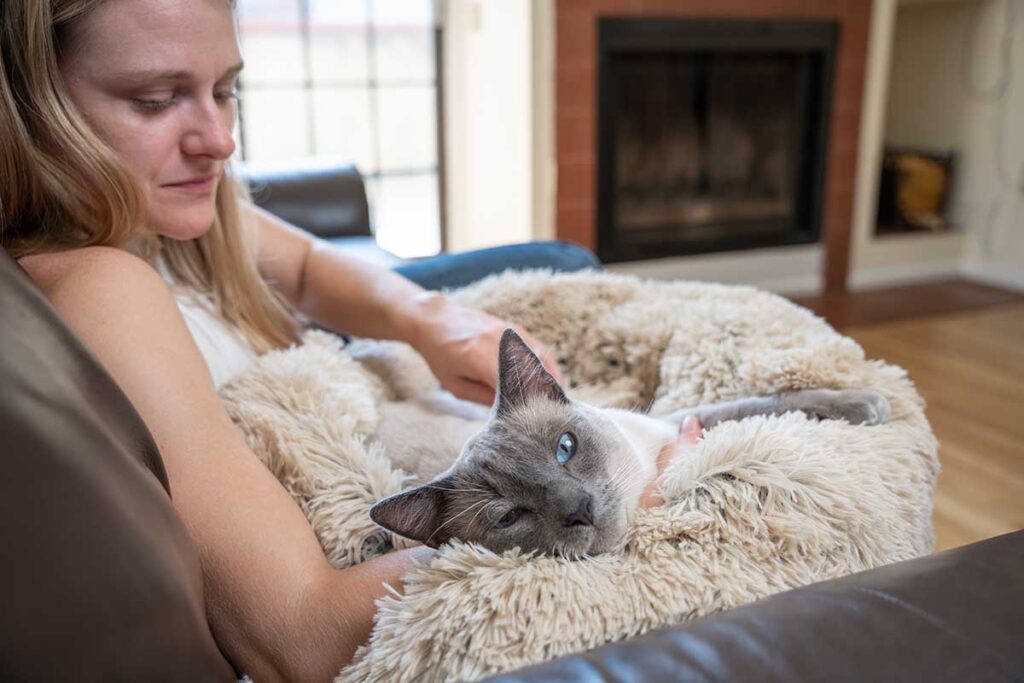
When you see your cat twitching, or those eyelids fluttering while the paws run in place, you might wonder what your floof is dreaming about.
French neurologist Michel Jouvet discovered REM sleep in the 1950s. REM stands for Rapid Eye Movement, which is the sleep stage when we dream. His sleep research found that during REM sleep, people’s brains were active, and their eyes moved rapidly from side to side. Jouvet also found that REM sleep was essential for good overall health.
It turns out that all mammals experience REM sleep, including our feline friends. When cats experience REM sleep, the electrical activity in your kitty’s brain connects with your cat’s brain waves, triggering memories of specific activities that sometimes appear as twitching, squirming, and moving paws.
Cats spend around two-thirds of their sleeping time in the REM stage of sleep. When you see their eyes fluttering under closed lids, that’s REM sleep, and your kitty is in dreamland.
And since cats sleep more than humans, they also dream more than humans. So when those eyes are flickering, and your kitties’ tail is twitching, they may be dreaming of stalking prey or processing the memory of doing so.
During their nap, your kitty will rotate through two primary sleep phases – REM and NREM (non-REM sleep.) Your kitty will start with an initial light sleep known as NREM. Your kitty will rest quietly but still be aware. Occasionally, you might see your cat has an eye open during this sleep stage. If all remains quiet, they’ll move into the REM stage and drift off into a deep sleep.
Why Do Cats Sleep So Much?
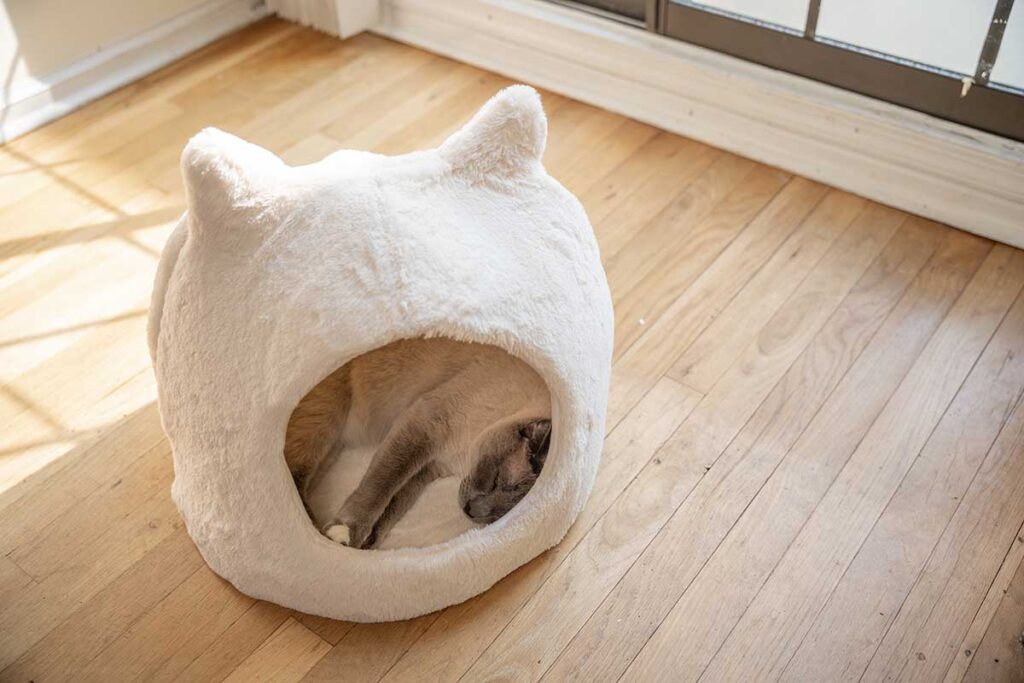
Experts say cats snooze so much because they need to conserve energy for hunting. Even pampered house cats retain the instincts of natural predators. They need to be ready to spring into action when prey scurries by. If you’ve ever seen your cat go from sleep to pounce mode in a millisecond, you’ve witnessed this in action.
Even if all the hunting your cat does is pouncing on a cat toy, you can’t get away from instinctual drives.
What Do Cats Dream?
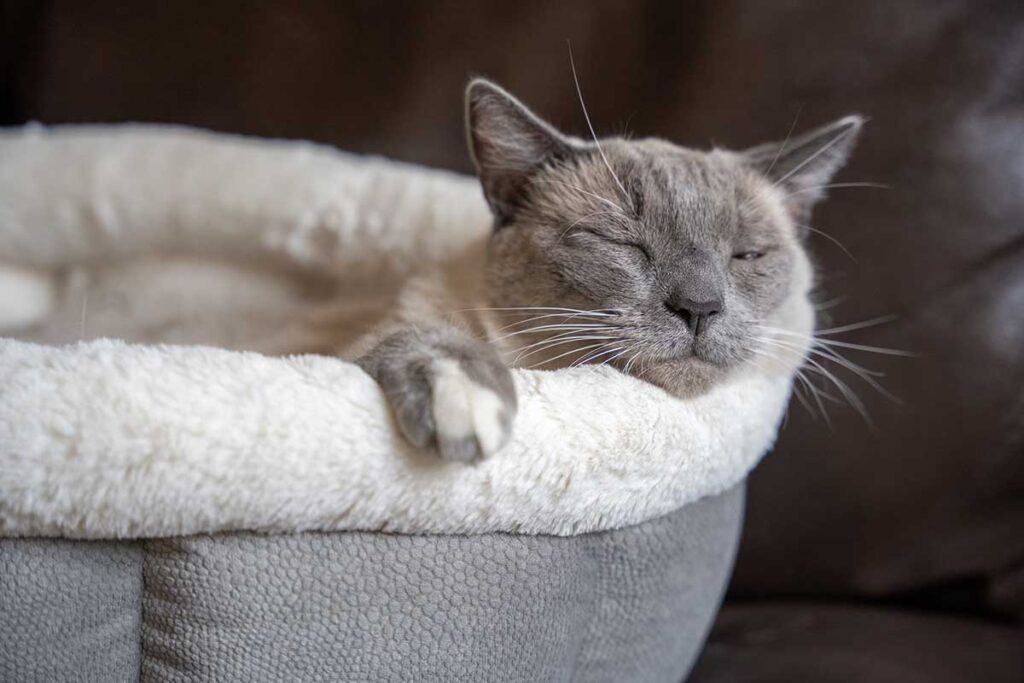
There are several theories about why cats dream. One theory is that dreaming allows cats to process and remember information from the day. Another theory is that dreaming helps cats to stay mentally fit by allowing them to practice hunting and fighting skills.
Whatever the reason, it is clear that dreaming is important for cats’ health and well-being. Whether they like to tuck up near your desk or loll on a nearby couch, most cats rotate through their favorite napping spots throughout the day.
Do cats have nightmares?
It’s not known for sure if cats have nightmares, but they probably do. After all, cats spend a lot of time in REM sleep, and it’s thought that dreams occur during REM sleep. And since they sleep much more than us, they dream more too. Just like us, the stuff of their bad dreams probably ranges from the mundane to the terrifying.
How Much Sleep Is Too Much?
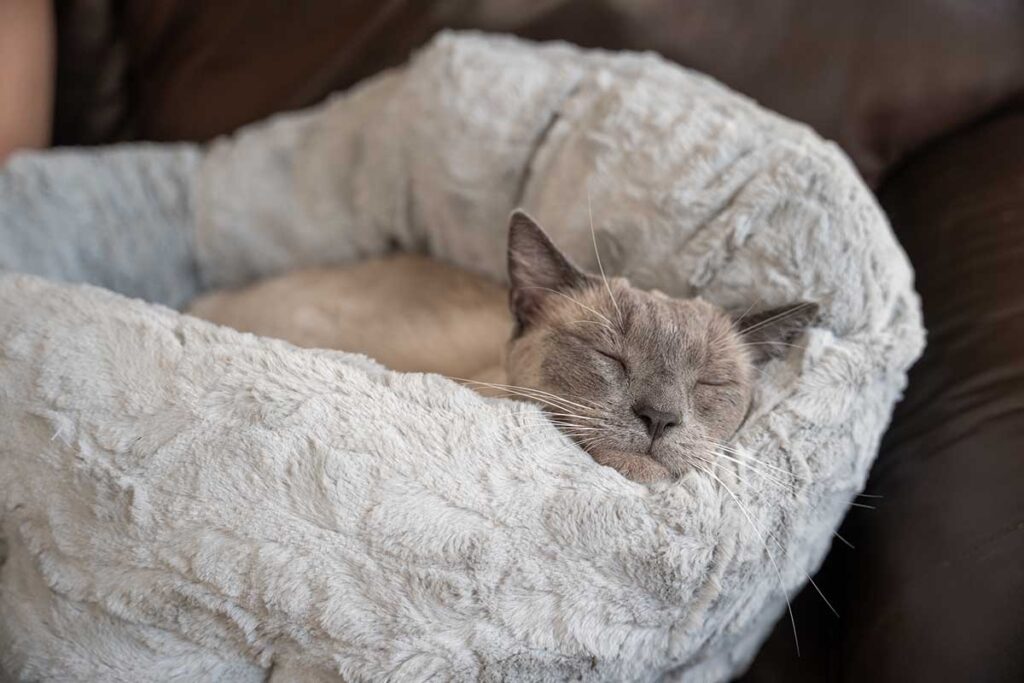
As your kitty ages, he’s likely to sleep even more. Senior cat pet parents know their kitty doesn’t do much besides nap, eat, gaze out the window, and repeat.
You can help your kitty get more exercise by offering play sessions with kitty toys throughout the day or evening. Even senior cats are likely to feel more energetic during their typical “hunting” period around sunset.
However, if you think your kitty’s behavior has changed, it’s good to observe the behavior, make notes, and make an appointment with your veterinarian.
Cat Beds for a Good Night’s Sleep
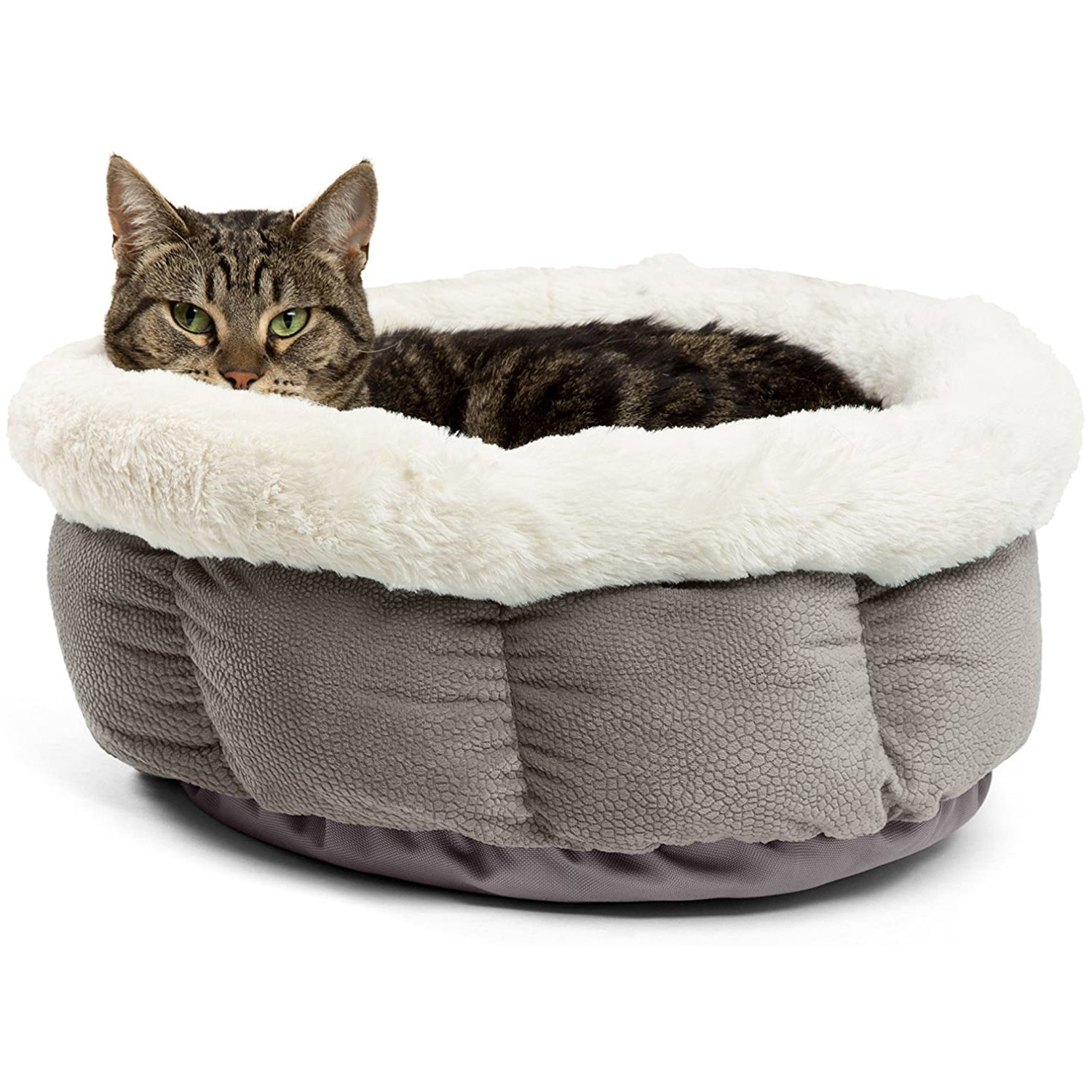
Cuddle Cup Dog & Cat Bed, 17×17
A PROTECTIVE DESIGN FOR SUPERIOR SLEEP! Owning a pet can make your home feel a little safer. And just like humans animals like to feel protected too. Unfortunately most cat and dog beds have an open pillow-like design that can leave your pet feeling exposed or vulnerable. With a Cuddle Cup by Best Friends by Sheri you can help create a secure sleeping environment! Our design starts with a round shape that…
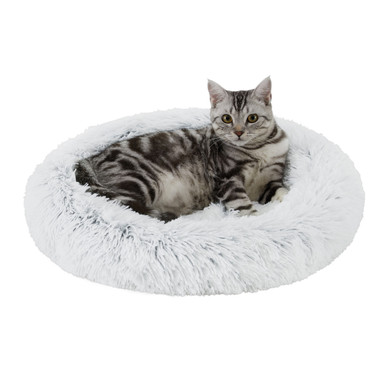
Calming Oval Cat Bed Pad, Frost, 21X19
The Best Friends by Sheri calming cat bed pad simulates that feeling of comfort and security kittens get from their mother. These donut cat beds are designed with a 1/4″ sleeping surface and deep crevices that envelope your pet in soft faux fur ideal for snuggling and burrowing. Perfect for pets that love to curl up, the raised rim provides head and neck support while the filling offers joint and muscle…
 Amazon
Amazon Chewy
Chewy
